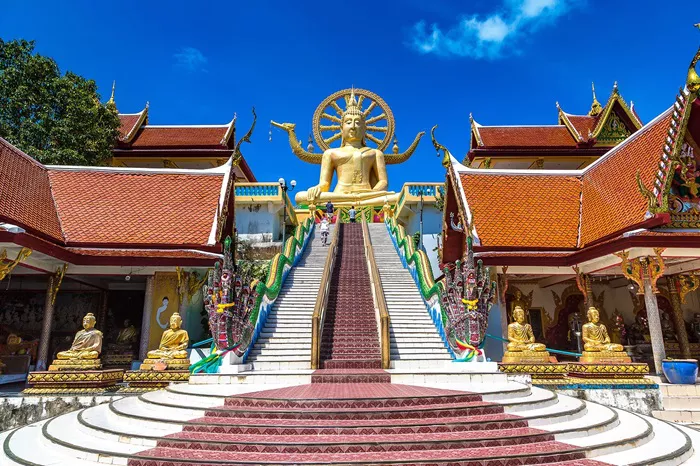Buddhist temples are more than just architectural structures; they are sacred spaces that play a pivotal role in the spiritual development of practitioners. These temples serve as centers for meditation, learning, and community, offering believers a conducive environment to deepen their understanding and practice of Buddhism.
The Role of Buddhist Temples in Spiritual Development
Sanctity of Space
The serene and sacred atmosphere of Buddhist temples provides an ideal setting for meditation and reflection. The tranquil environment helps practitioners to quiet their minds, fostering a deeper connection with their inner selves and facilitating spiritual growth.
Structured Learning
Temples often serve as educational centers where monks and scholars impart teachings on Buddhist scriptures and philosophy. This structured learning helps believers gain a profound understanding of Buddhist doctrines, guiding them on their spiritual journey.
Community and Fellowship
The communal aspect of temple life fosters a sense of belonging among practitioners. Engaging in group prayers, meditation sessions, and religious festivals strengthens communal bonds and provides emotional and spiritual support, enhancing individual spiritual growth.
Architectural Influence on Spirituality
Symbolism in Design
Buddhist temples are meticulously designed with rich symbolism that reflects spiritual beliefs. Elements such as stupas, mandalas, and specific geometric layouts are incorporated to represent the cosmos and the path to enlightenment, influencing the spiritual mindset of visitors.
Art and Murals
The art and murals within temples depict stories of the Buddha’s life, teachings, and Buddhist cosmology. These visual representations serve as educational tools and meditation aids, helping believers internalize teachings and reflect on their spiritual path.
Sacred Geometry
The architectural layout of temples often follows sacred geometry, symbolizing the universe and the journey towards spiritual awakening. This intentional design aids in focusing the mind during meditation, supporting the practitioner’s spiritual development.
Rituals and Practices
Daily Worship
Regular participation in daily worship rituals, such as chanting and offering prayers, instills discipline and mindfulness. These practices help believers cultivate virtues like compassion and humility, essential for spiritual growth.
Meditation Retreats
Many temples offer meditation retreats that provide immersive experiences in mindfulness and concentration practices. These retreats allow practitioners to deepen their meditation skills, leading to greater self-awareness and spiritual insight.
Life Cycle Ceremonies
Temples play a significant role in marking important life events, such as births, weddings, and funerals. Engaging in these ceremonies within the temple setting reinforces spiritual beliefs and provides a sense of continuity and community support.
Social and Cultural Impact
Community Outreach
Buddhist temples often engage in community service and outreach programs, promoting social welfare and ethical living. This involvement encourages believers to practice compassion and generosity, extending their spiritual practice beyond the temple walls.
Cultural Preservation
Temples serve as custodians of cultural heritage, preserving traditional arts, music, and rituals. This preservation allows believers to connect with their cultural roots, fostering a deeper appreciation for their spiritual traditions.
Interfaith Dialogue
In diverse societies, Buddhist temples often act as centers for interfaith dialogue, promoting understanding and respect among different religious communities. This openness enriches the spiritual experience of believers, broadening their perspectives and fostering a spirit of inclusivity.
Psychological Benefits
Stress Reduction
The peaceful environment of temples offers a refuge from the stresses of daily life. Engaging in meditation and prayer within this setting has been shown to reduce anxiety and promote mental well-being, supporting the psychological aspect of spiritual growth.
Emotional Healing
Temples provide a space for emotional healing, where individuals can seek solace during challenging times. The supportive community and spiritual practices offer comfort and guidance, aiding in emotional recovery and growth.
Mindfulness Training
The emphasis on mindfulness in temple practices enhances self-awareness and presence. This training helps believers live in the moment, fostering a deeper connection with themselves and their surroundings, which is essential for spiritual development.
Global Influence and Adaptation
Spread of Buddhist Teachings
Buddhist temples have played a crucial role in spreading Buddhist teachings worldwide. Through missionary work and cultural exchange, these temples have introduced Buddhist philosophy and practices to diverse cultures, influencing spiritual landscapes globally.
Adaptation to Modern Contexts
In contemporary settings, Buddhist temples have adapted to address modern spiritual needs. Incorporating elements like mindfulness-based stress reduction programs, temples cater to a broader audience, demonstrating the flexibility and relevance of Buddhist practices in modern life.
Intercultural Exchange
Temples serve as hubs for intercultural exchange, where individuals from various backgrounds can learn about Buddhism and engage in spiritual practices. This exchange fosters mutual respect and understanding, enriching the spiritual experiences of all involved.
Conclusion
Buddhist temples are integral to the spiritual development of believers, offering spaces for learning, practice, and community. Through their architecture, rituals, and cultural contributions, these temples provide environments that nurture the body, mind, and spirit, guiding practitioners on their path to enlightenment.

